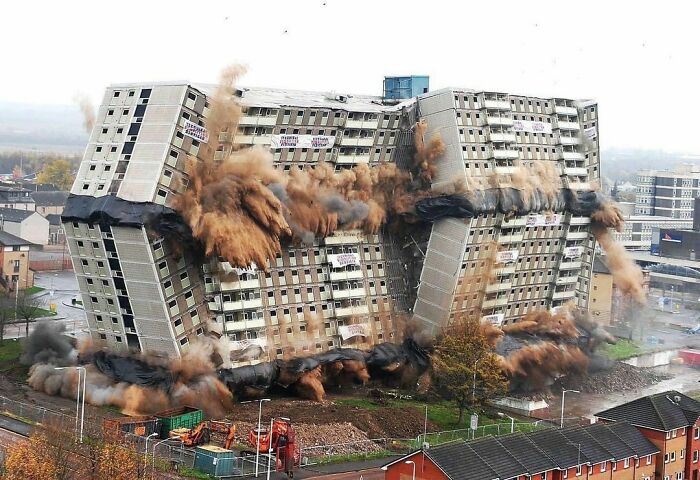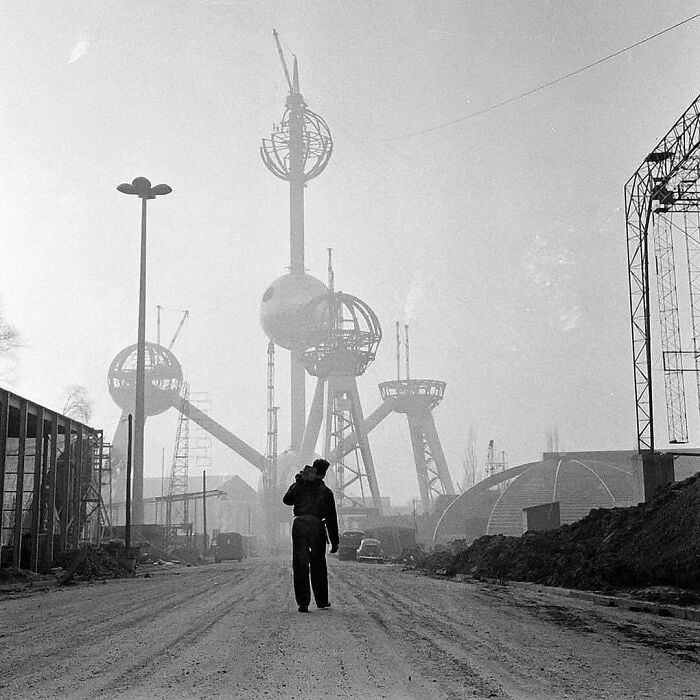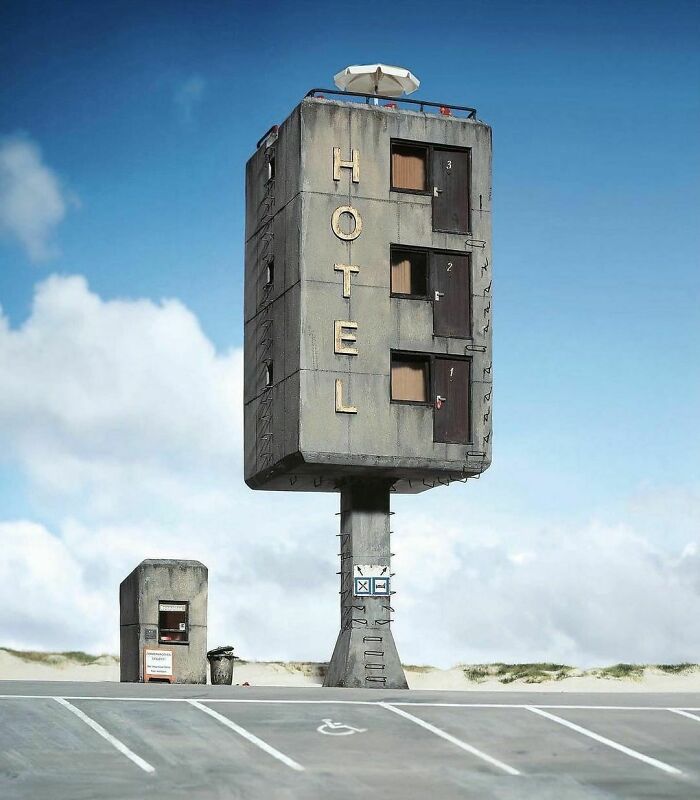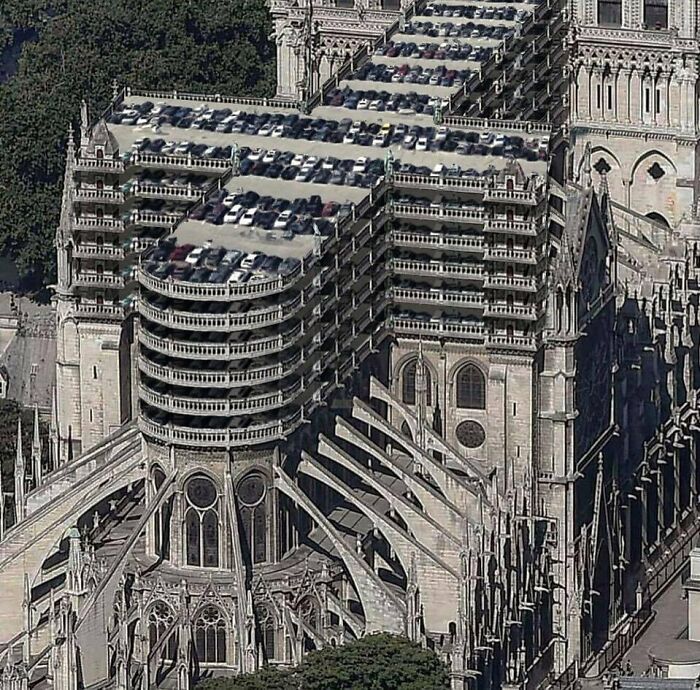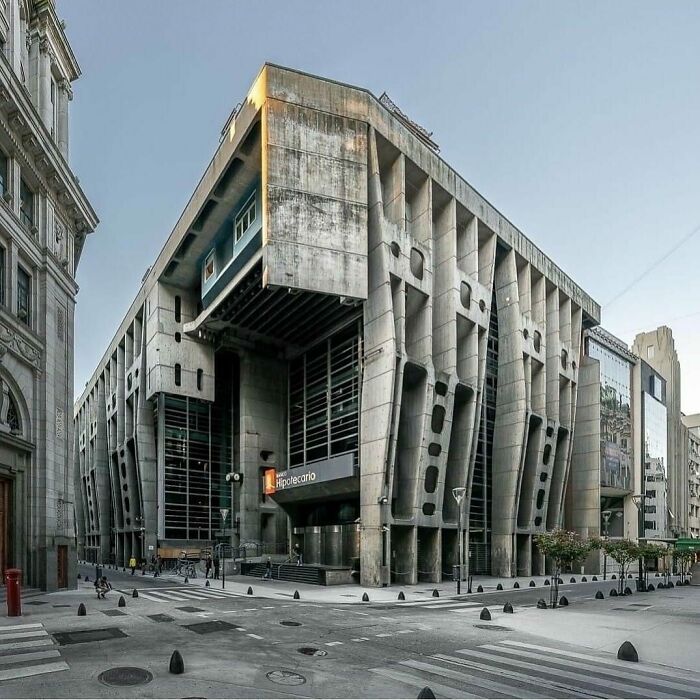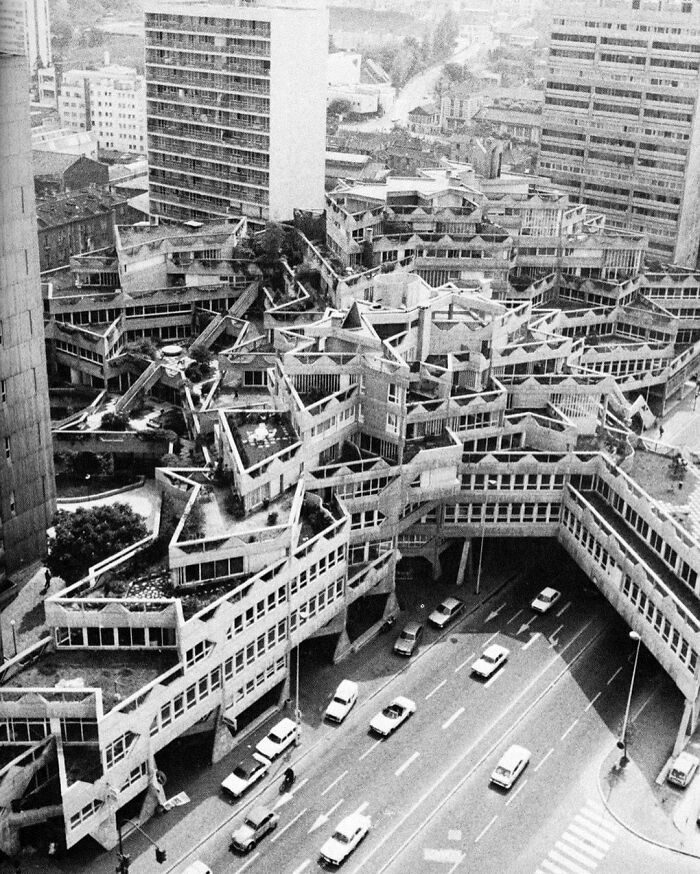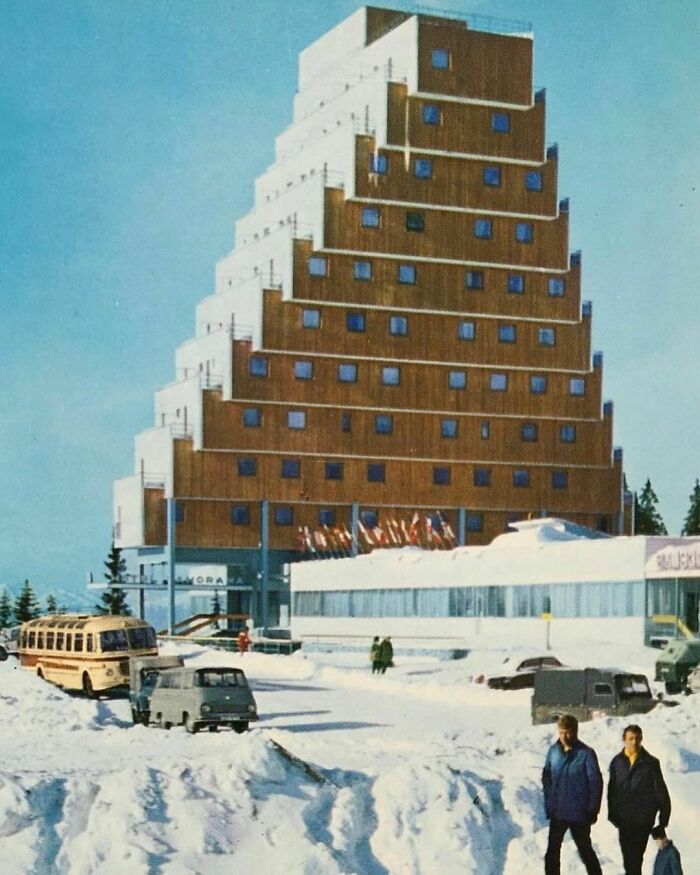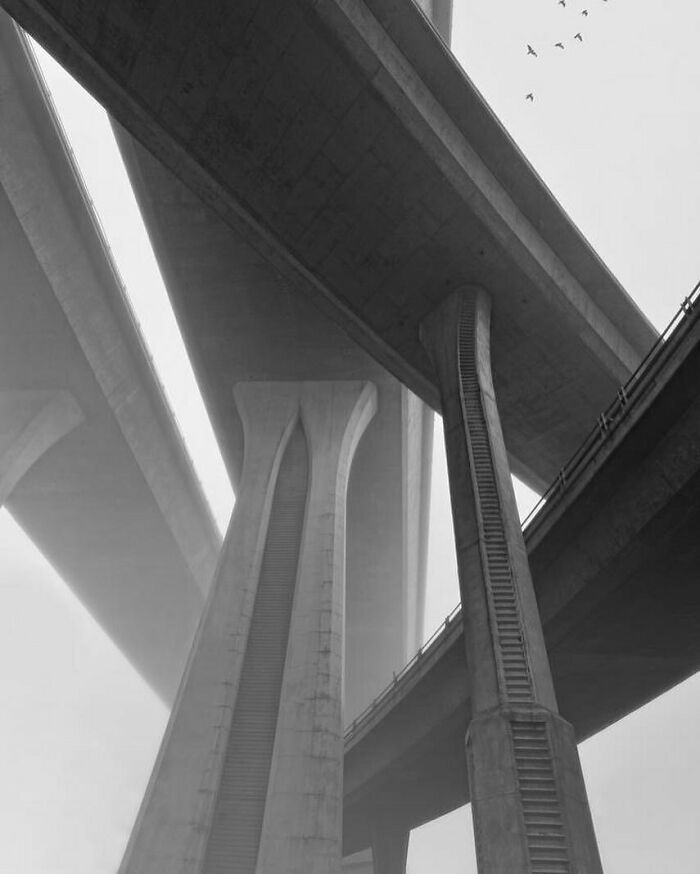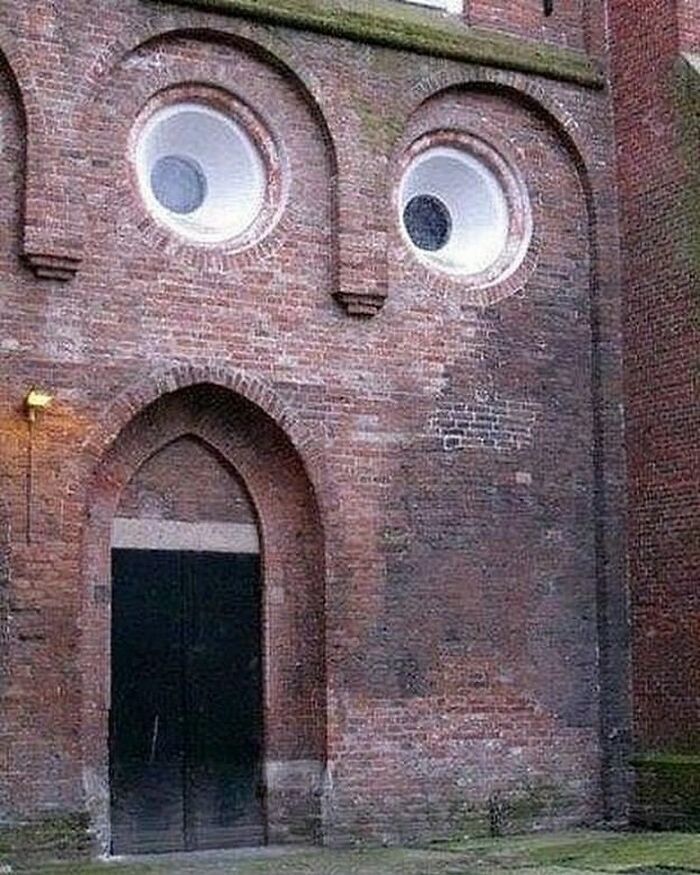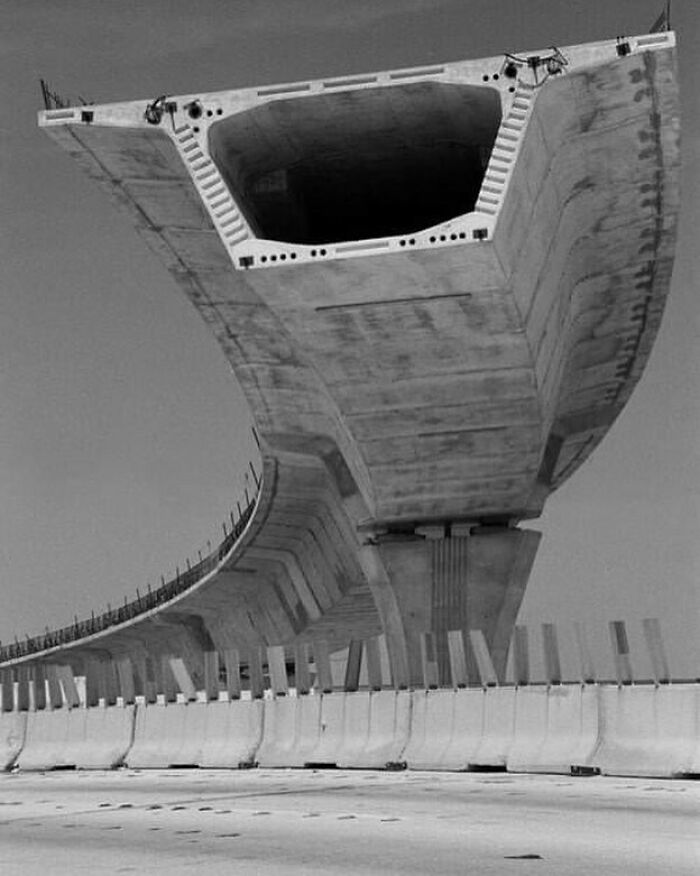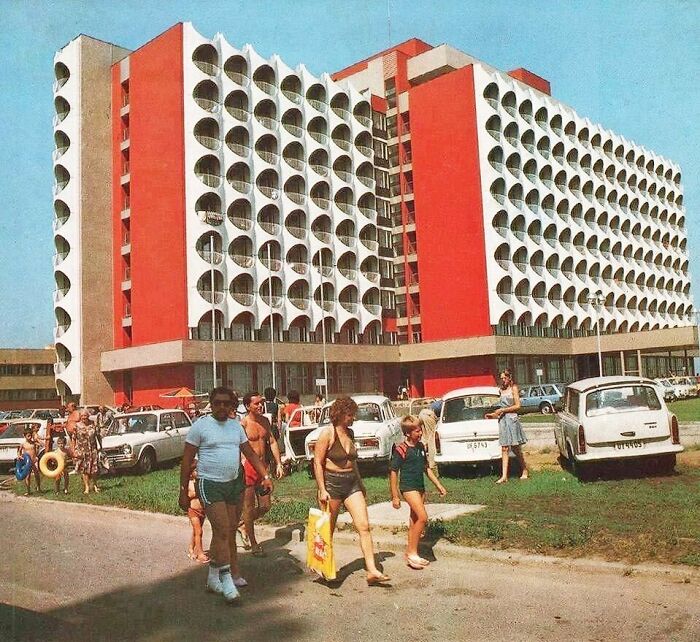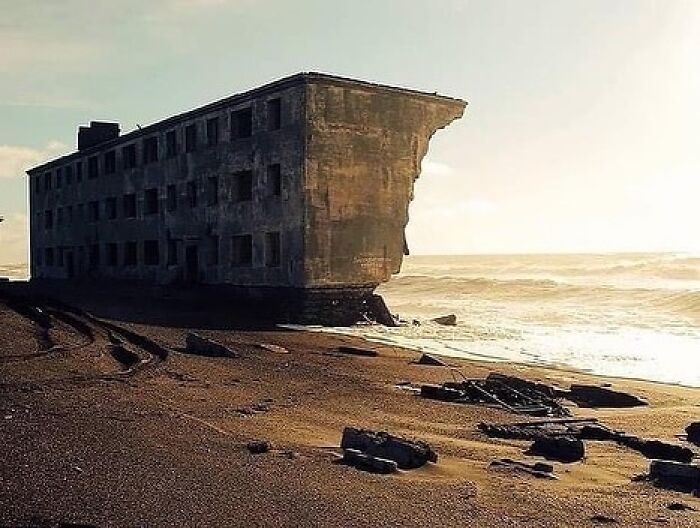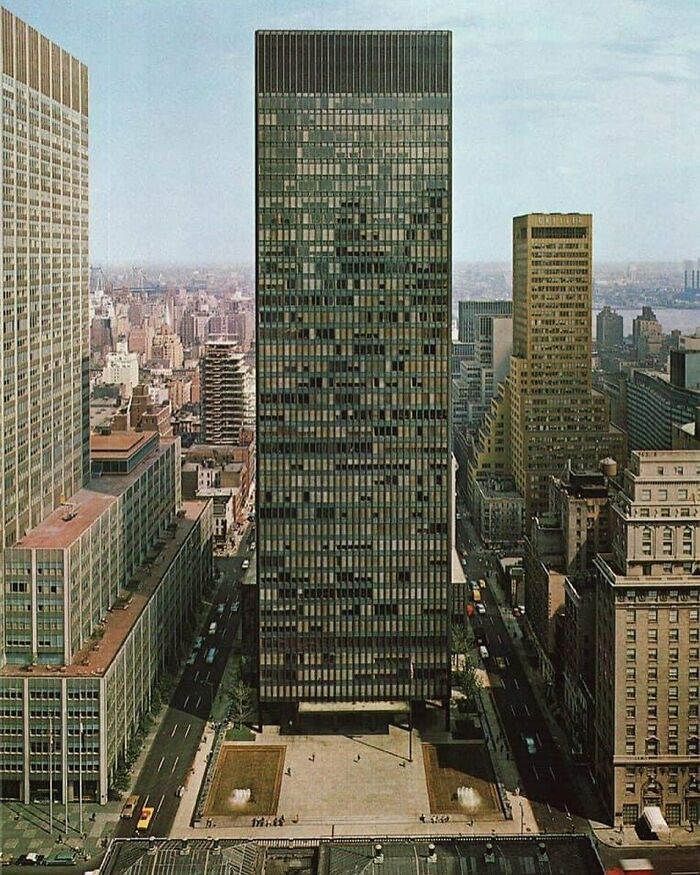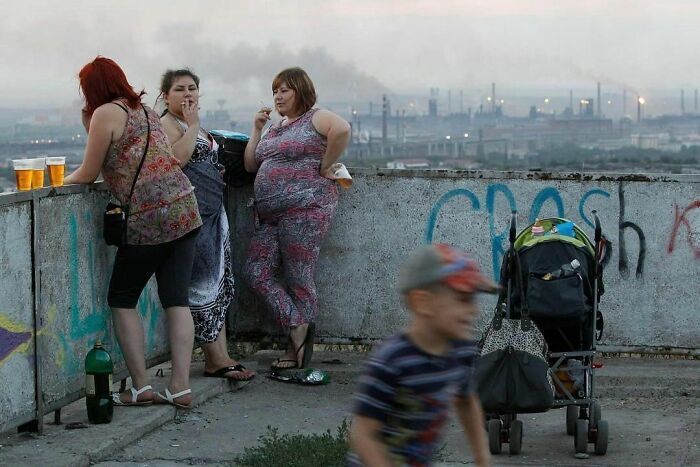
30 Pics That Perfectly Sum Up Brutalist Architecture, As Shared On This Online Page
Brutalism is an architectural style that prioritizes bare building materials and structural elements over decorative design. It is generally associated with rough, unfinished surfaces, unusual shapes, and just an overall heavy look.
Originating in the 1950s and 1960s, brutalist buildings were popular in public housing projects, government buildings, and universities. Despite criticism for its rough appearance and perceived coldness, the style has gained a big following in recent years, and the Instagram account BRUTgroup is an excellent illustration of that.
Sharing pictures of brutalist aesthetics, it has garnered a following of 445K people (one of whom is a brilliant Polish composer, Hania Rani, who has a beautiful Instagram account of her own), and the number just keeps climbing. Continue scrolling to check out some of the account's most-liked uploads and see for yourself that structures can elicit strong emotions. Whether it's love or hate.
More info: Instagram
This post may include affiliate links.
Mask Of Sorrow (1996, Dedicated To The Memory For The Prisoners Of Gulag) Magadan, Russia Sculptor : Ernst Neizvestny
This Street Lamp In Wroclaw, Poland
Descending from modernism, Brutalism is said to be a reaction against the nostalgia of the 1940s. Derived from the Swedish phrase nybrutalism, the term "New Brutalism" was first used by British architects Alison and Peter Smithson for their pioneering approach to design.
The style was further popularized in a 1955 essay by architectural critic Reyner Banham, who associated the movement with the French phrases beton brut ("raw concrete") and art brut ("raw art").
The style was partly foreshadowed by the modernist work of other architects such as French-Swiss Le Corbusier, Estonian-American Louis Kahn, German-American Mies van der Rohe, and Finnish Alvar Aalto.
Chronicles Of Georgia, Tbilisi
Table. Author Stephan Schmitz
Ww2 German Observation Tower On Guernsey Island
Given the style's European roots, it's no surprise that many of the structures that appear on this Instagram account are from that continent.
One of Brutalism’s most famous critics is King Charles III of England, whose speeches and writings on architecture have criticized Brutalism, calling many of the structures "piles of concrete" and likening them to "a monstrous carbuncle."
One Of Two Twin Underground Reservoirs In Forstenried Park Holding The Drinking Water For Munich, Germany
High Island Reservoir East Dam, Sai Kung East Country Park, Sai Kung, Hong Kong
For anyone who wants to know, the objects break the water to stop it slamming into whatever object they are against.
Torres Blancas In Madrid. Photo By Gregor Pieplow
Named Torres Blancas (White Towers) because 1) the original project was 2 towers, but finally only one was built; and 2) they used the word "blancas" (white) because the original project included a mix of marble power and concrete for the facade. It's a remarkable project, a combination of organic (a building that grews like a tree) and brutalist (construction materials on view), for a block of luxury apartments (current sale prices are from €1,000,000). But, yes, a high pressure water cleaning would make a point.
And his arguments were valid. Brutalism's functionality made it the perfect fit for cash-strapped post-war Europe, seeking to rebuild urban centers for growing populations. It became the go-to choice for many low-cost housing projects and, as a result, in Western Europe, Brutalism became a symbol of poverty. In Eastern Europe this was compounded; elision between projects and the governments that commissioned them often precluded appreciation of Brutalism's merits.
Backup Power Station, Sweden
Burroughs Wellcome Building, Paul Rudolph Architect Research Triangle Park, North Carolina, USA, 1972
London Aquatics Centre, 2014
Glencairn Tower, Motherwell, Scotland Photo By Les Shafer
I thought it was built like that. A lot of modern architecture looks like it is in mid-destruction.
This seems to be from an article that showed a photo series of the demolition; it includes a shot of the building wrapped for explosion but still standing: https://www.dailymail.co.uk/news/article-2063950/Incredible-photographs-Scottish-tower-block-reduced-pile-rubble.html
Demolition screen capture. Just your regular ugly as sin apartment block.
Just because we don't particularly prefer a form of art or any other expressive medium, that's no reason to destroy it.
Load More Replies..."A lot of post-war developments were really badly designed and badly maintained housing estates," Peter Chadwick, the author of This Brutal World told CNN.
"Flats, many stories up, don't have direct access to outside space, so the 'outside' is on the ground level. There's these negative, redundant spaces around the building, which prompts anti-social behavior. Brutalism has suffered because of this."
Chuvash State Opera And Ballet Center, Chuvash Republic
1994. The Hope For Peace (Espoir De Paix) Monument Is A Monument In Yarze, Lebanon
Made to celebrate the end of the Lebanese Civil War in 1990. It was designed by the artist Armand Fernandez
I should imagine a lot of buildings in Lebanon look like this, and not intentionally either.
Art Work: Martin Loureiro
Beirut. Photo By Serge Najjar
Although the Brutalist movement was largely over by the late 1970s and early 1980s, it has experienced a resurgence of interest since about 2015.
Many of the defining aspects of the style have been softened in newer buildings, with concrete façades often being sandblasted to create a stone-like surface, covered in stucco, or composed of patterned, pre-cast elements. These features are also found in renovations of older Brutalist buildings, such as the redevelopment of Sheffield’s Park Hill in South Yorkshire, England.
Construction Of The Atomium, The Belgian Pavilion For The World Expo 58 In Brussels, Belgium, 1957. Photo By Dolf Kruger
Solna Centrum Station, Stockholm, Sweden
Offices Of The Central Social Institution, Prague, Czechoslovakia - Ca.1937
This Is The View Looking Up To A Spiralling Staircase, Seen Inside The Main Tower Of A Church In France. Building: St. Joseph's Church
Location: Le Havre, France Architect: Auguste Perret
However, its future remains cloudy. "Unfortunately it's a lot more expensive to preserve the buildings than to knock them down and build something else in their place," Chadwick explained.
"[Brutalism] is definitely having its moment, which is great. I just hope it continues, the interest and the preservation of buildings, before we lose any more."
Climbing Holidays, 2017
This model of a hotel on stilts brings to mind Tatzu Nishi’s suspended spaces, in which rooms, and even functioning hotels, are installed around historical public monuments
Dam Tunnel In The Woods Outside Pittsfield, Massachusetts
Abandoned Modernist Hotel In Bosnia
I did two tours in Bosnia with the UN.. and one with NATO (although the last UN one kinda overlapped so all we had to do to switch to NATO was swap our UN berets out with our native unit's). We moved around quite a bit, but back end of '94 we were based mainly near Kislejack just outside of Sarajevo in a bombed out hotel. It was fun times.... and s**t times.. all rolled into one.
Singapore Photo By Leslie Heng
House Lim-Millan (Also Leme House) By Paulo Mendes Da Rocha Sao Paulo, Brazil 1970-74
Chongqing, China
Tbilisi, Georgia
Duga, Outside Of Chernobyl, Was A Soviet Experimental Over-The-Horizon Radar System. It Was Developed For The Soviet Abm Early-Warning Network. The System Operated From 1976 To 1989
Congresso Nacional Do Brasil, Brasília, Brazil. 60s Architect: Oscar Niemeyer
Any Thoughts?
The title here is "115 Pics That Perfectly Sum Up Brutalist Architecture" but in fact only a short few of these entries represent brutalist architecture. Brutalism isn't a description of how you feel when you look at one of these pictures, it was a specific movement in architecture, like Art Deco, Nuevo, International, Gothic. More entries here are mislabeled Brutalist than are correct.
Thank you for saying this. I got halfway and thought "someone has no idea what Brutalism is.
Load More Replies...The amount of non brutalism in this list was starting to straight up enrage me
For me the problem with Brutalism is twofold. Firstly, it was often used for social housing as an excuse for cost cutting or poor design. Stack a pile of concrete boxes high and stick a few windows in it, job done. Ended up with buildings which were poor quality and not designed for actual living. Secondly, when they are designed well, they tend to look great as long as they are impeccably maintained, and surrounded by a landscape designed to compliment it. As soon as you let streaks appear on the concrete, paint to fade or replace a lawn with car parking, they are very quick to become oppressive and bleak
We have a Brutalist building where I work and it's a listed building (protected because of historical significance). This means we can't do anything to the exterior despite the building no longer being fit for purpose and being an eye sore.
Load More Replies...They never did. They simply misunderstood that the physically closer people get to one another the more they hate one another.
Load More Replies...Some of these buildings are stunning, Im a fearce fan of " distopian " looking buildings, and industrial " decor ", and some of the stuff here is amazing
At least two dozen pictures don't have anything to do with Brutalism architecture.
The more lists that I see that are centered around a vocabulary word, the more that I think people have simply run out of ways to label lists, coupled with having discovered the thesaurus in desperation (or did searches for "another word for" because they don't know the word "synonym"), but not the patience to check the actual definition in the dictionary.
I grew up around several examples of Brutalism. Pictures don’t do them justice. Up close they have a power to them. So rough and foreboding, and BIG. Not like any other building you’ve seen. I have soft spot for this style. I will say a lot of these photos weren’t showing Brutalism architecture.
Brutalism? The list is mostly not Brutalism in the slightest. Quite a lot of modernism, art nouveau, neo-gothic, art deco.
I.M. Pei designed the Paul Mellon Arts Center at Choate Rosemary Hall in Wallingford, CT. I wish there was a way to include it in this list. a6a026f6c1...27483a.jpg 
If you liked that list you will love https://en.m.wikipedia.org/wiki/1933_Old_Millfun
Brutalism just means bare concrete. Bare concrete has huge advantages over other building materials such as brick, glass, timber and steel. High strength concrete has a similar material properties (strength, elasticity etc.) to aluminium. Concrete is considered a "smart building material" because it is self-healing. But for good aesthetics it needs top quality formwork (not timber palings) and rust-proof reinforcement when in thicknesses less than 100 mm.
while i disagree that brutalism is just bare concrete, you are right about it being a wonderful building material. and underutilized. Although the process to make it IS fairly damaging.
Load More Replies...The title here is "115 Pics That Perfectly Sum Up Brutalist Architecture" but in fact only a short few of these entries represent brutalist architecture. Brutalism isn't a description of how you feel when you look at one of these pictures, it was a specific movement in architecture, like Art Deco, Nuevo, International, Gothic. More entries here are mislabeled Brutalist than are correct.
Thank you for saying this. I got halfway and thought "someone has no idea what Brutalism is.
Load More Replies...The amount of non brutalism in this list was starting to straight up enrage me
For me the problem with Brutalism is twofold. Firstly, it was often used for social housing as an excuse for cost cutting or poor design. Stack a pile of concrete boxes high and stick a few windows in it, job done. Ended up with buildings which were poor quality and not designed for actual living. Secondly, when they are designed well, they tend to look great as long as they are impeccably maintained, and surrounded by a landscape designed to compliment it. As soon as you let streaks appear on the concrete, paint to fade or replace a lawn with car parking, they are very quick to become oppressive and bleak
We have a Brutalist building where I work and it's a listed building (protected because of historical significance). This means we can't do anything to the exterior despite the building no longer being fit for purpose and being an eye sore.
Load More Replies...They never did. They simply misunderstood that the physically closer people get to one another the more they hate one another.
Load More Replies...Some of these buildings are stunning, Im a fearce fan of " distopian " looking buildings, and industrial " decor ", and some of the stuff here is amazing
At least two dozen pictures don't have anything to do with Brutalism architecture.
The more lists that I see that are centered around a vocabulary word, the more that I think people have simply run out of ways to label lists, coupled with having discovered the thesaurus in desperation (or did searches for "another word for" because they don't know the word "synonym"), but not the patience to check the actual definition in the dictionary.
I grew up around several examples of Brutalism. Pictures don’t do them justice. Up close they have a power to them. So rough and foreboding, and BIG. Not like any other building you’ve seen. I have soft spot for this style. I will say a lot of these photos weren’t showing Brutalism architecture.
Brutalism? The list is mostly not Brutalism in the slightest. Quite a lot of modernism, art nouveau, neo-gothic, art deco.
I.M. Pei designed the Paul Mellon Arts Center at Choate Rosemary Hall in Wallingford, CT. I wish there was a way to include it in this list. a6a026f6c1...27483a.jpg 
If you liked that list you will love https://en.m.wikipedia.org/wiki/1933_Old_Millfun
Brutalism just means bare concrete. Bare concrete has huge advantages over other building materials such as brick, glass, timber and steel. High strength concrete has a similar material properties (strength, elasticity etc.) to aluminium. Concrete is considered a "smart building material" because it is self-healing. But for good aesthetics it needs top quality formwork (not timber palings) and rust-proof reinforcement when in thicknesses less than 100 mm.
while i disagree that brutalism is just bare concrete, you are right about it being a wonderful building material. and underutilized. Although the process to make it IS fairly damaging.
Load More Replies...
 Dark Mode
Dark Mode 

 No fees, cancel anytime
No fees, cancel anytime 














